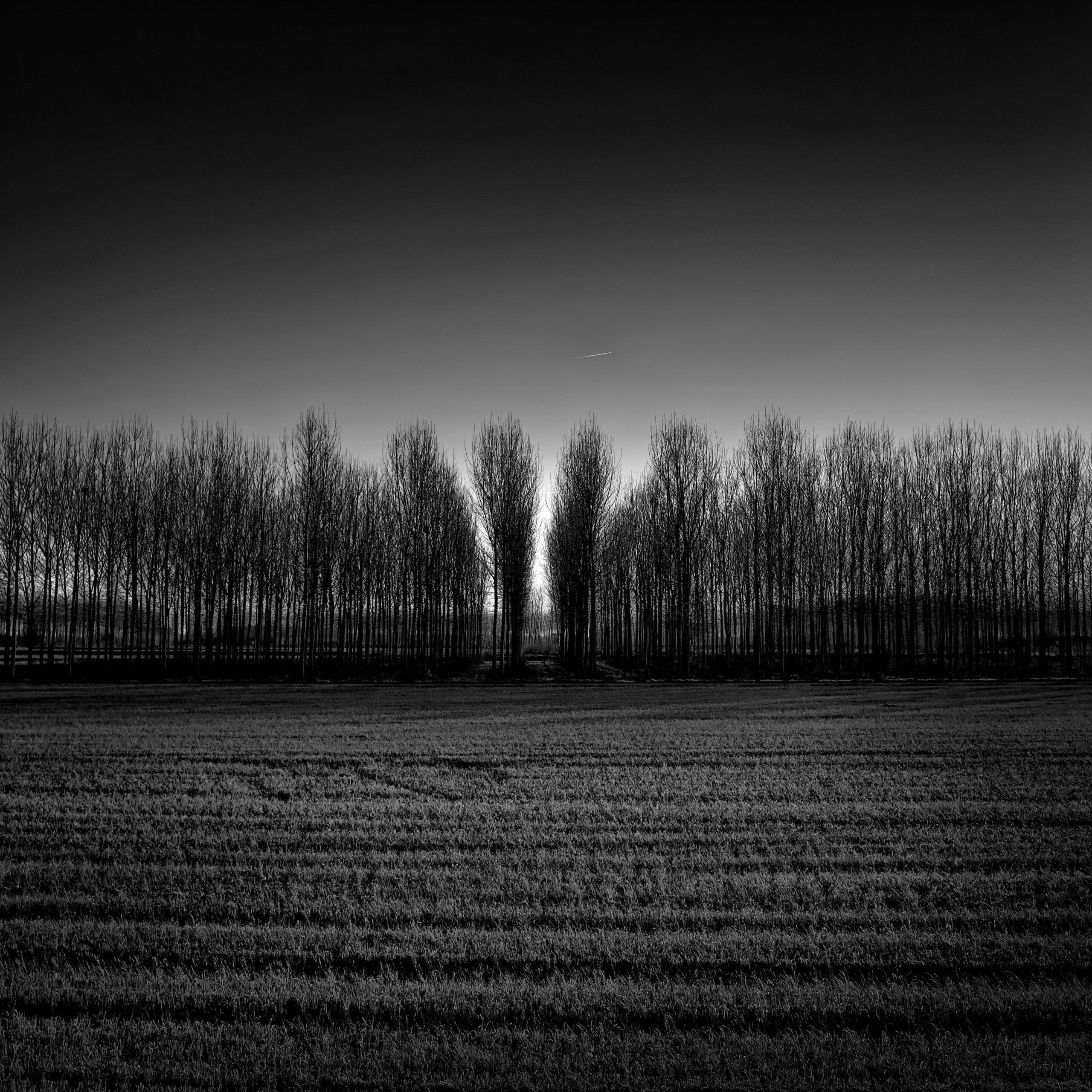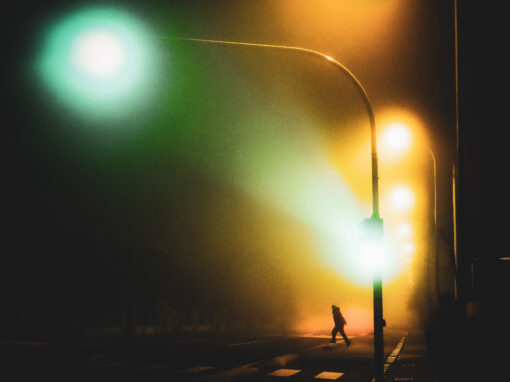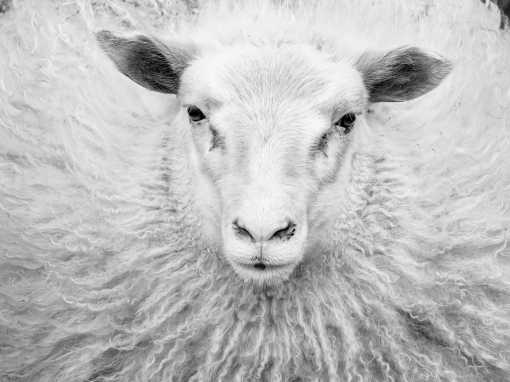I propose here the presentation written by Beppe Mecconi for one of my exhibitions dedicated to trees, of which this image was part:
Roberto Besana is a man of great curiosity and equally substantial talents. Among these, one fundamental talent is, without a doubt, photography. Always tirelessly roaming along coasts and thickets, mountains and streams, ridges and big cities, rice fields and small villages, suburbs and abandoned factories, snow, fog, and mist… Always, as I said, with his backpack and his cameras.
What drives this constant seeking, exploring, observing without pause, through his eyes and his gaze? A continuous sense of wonder toward this terrible and marvelous world of ours.
And Besana manages to find that Wonder everywhere: in the frost on blades of grass in the morning, in the shadows drawn across mountain peaks at dusk, in a lone transmission tower, in a dry riverbed, in the clouds, in an old peeling wall, in the rain, in the abandoned land, in the fields worked by human hands and, perhaps most of all, in trees.
Trees hold a special pull for him. But perhaps “pull” is not the right word — it is, I would say, a mixture of enchantment and respect. Ancient, ancestral feelings are still present in the souls of the most sensitive.
The same feeling — and I believe I am not mistaken — that the ancient peoples of the earth experienced, everywhere across the world, as they shaped the myths of the cosmic tree, the mystical tree, the Tree of Life. The Tree as Mother and Father — Yggdrasil, Aśvattha, Djed, Elam, the Bodhi Tree, Asherah…
The tree whose roots sink into the soil of origins, but whose buds blossom into the stars, the sun, the universe. The tree that survives the gods themselves.
In Roberto’s photographs of trees, there is the same love, the same primordial impulse toward reverence for these Ancestors who already existed on this earth — which we stubbornly consider “ours” — millions of years before the first hominid appeared.
Besana’s trees, beyond being magnificent and extraordinary images, are — and this is unmistakably felt — Trees that are respected.
“I see everywhere in nature, and especially in trees, a capacity for expression — one might say, a soul.” The phrase is by Van Gogh, but it would not have surprised me to hear it from Roberto himself.
Beppe Mecconi
Artist, writer, theater director
What are the TWO most impactful features that make your image a good photograph? Don’t be shy!
This image is both beautiful and good.
The beauty lies in the light within the shadows and in the forms contained within the square of the composition.
I apply an aesthetic that, to me, is essential — one that stops the viewer’s gaze and invites curiosity. The photograph belongs to a narrative series about human activities that mark and transform the environment, altering the landscape and the trees.
It is good because it carries a message.
This “forest” is the result of human intervention, constantly reshaping nature to fit our needs — often without respect or balance — destroying biodiversity and promoting economically profitable monoculture. Even the rice field in the foreground speaks of human alteration. The thin trail of an airplane in the sky tells us where progress inevitably heads.
If you could make this photo again, what would be the ONE thing you would like to do better or differently?
I rarely think about how I might photograph an image differently, because that moment was exactly what I saw and what struck me — in the expression of light and shadow. Along with this, the scene fully contained the underlying message I was seeking. At another moment, everything would have been different.
Roberto Besana shared this photograph with the FRAMES Facebook Group.
Photographer
Roberto Besana, La Spezia, Italy
Equipment and settings
Fujifilm X100V




